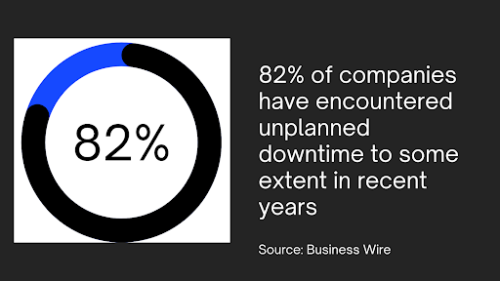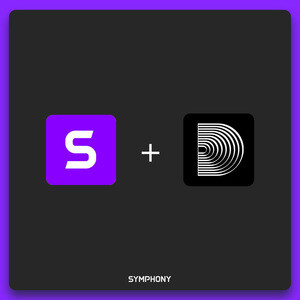
Do you ever find yourself yearning for a day at the spa, a game of soccer, or simply some time to indulge in your passions away from work? Balancing your job with your personal life can be tough. Whether you’re an artist or a therapist, your work hours are rarely the same every day. Managing your time effectively can sometimes seem like an insurmountable challenge. It can feel like managing your time well is impossible.
But fear not! There are methods to seize control of your time without sacrificing your passions. In this guide, we’ll explore simple tricks to help artists and therapists manage their time better. These tips will help you get more done while still finding time for yourself.
How Time Management Benefits Therapists and Creatives
Efficient time management can truly revolutionize the routines of therapists and creative professionals alike. For therapists, it allows them to be fully present during client sessions, avoid burnout, and maintain a healthy work-life balance. By streamlining administrative tasks and optimizing their schedules, therapists can devote more energy to their clients’ needs and their own self-care.
Creatives, on the other hand, often struggle with procrastination, creative blocks, and the challenge of balancing their passion projects with client work or day jobs. Implementing time management strategies can help them stay focused, meet deadlines, and protect their precious creative time. By prioritizing their most important tasks and minimizing distractions, artists can foster a consistent flow of productivity and inspiration.
In the next sections, we’ll cover the “Eat the Frog ” method of tackling your biggest task first. Additionally, we’ll discuss useful time management apps and tools, as well as explain what is the purpose of practice-management software. We’ll also look at how time management workshops and resources can really help therapists and creatives get better at managing their time effectively.
Eat the Frog
When you’ve got a long to-do list, it’s important to prioritize. The “Eat the Frog” technique says to tackle your biggest, hardest task first thing in the morning, before you do anything else.
The idea is that if you “eat the frog” (do the worst thing on your list) early, you’ll feel accomplished and it’ll be easier to power through the rest of your tasks. Plus, you’ll have the most energy and focus for that difficult job.
To use this technique, start each day by identifying your most critical or challenging task – maybe it’s a tough creative project, a difficult client meeting, or an admin task you’ve been putting off. Dedicate your freshest morning hours to conquering that “frog.”
Studies show people who “eat the frog” are more productive and less stressed, since they don’t have that dreaded task hanging over them all day.
While the Eisenhower Box helps categorize tasks by urgency and importance, “Eat the Frog” actually gives you a method for prioritizing your most crucial items. Use these techniques together to ensure your biggest priorities get the attention they need.
Leveraging Technology to Enhance Efficiency
Today we have tons of time management apps and tools available to streamline your workflow. For instance, Trello and Asana are popular project management platforms that allow you to organize tasks, set deadlines, and collaborate seamlessly with team members or clients.
Furthermore, time-tracking apps such as RescueTime and Toggl offer valuable insights into your time allocation, facilitating the identification of productivity gaps and necessary adjustments. Statistics show that 85% of professionals use time management apps to stay organized and focused, underscoring the value of integrating these tools into your daily routine.
Practice Management Software for Therapists
For therapists, practice management software can be a game-changer for streamlining administrative tasks and enhancing time management. This specialized software is designed to help therapists manage client schedules, maintain case notes, process billing, and handle other administrative duties more efficiently.
Through the automation of repetitive tasks and centralization of client information, practice management software liberates valuable time, which can then be reallocated to direct client care or personal pursuits.
Setting Boundaries and Learning to Say No
While time management strategies are essential, they can only be truly effective when you’ve mastered the art of setting boundaries. For many creatives and therapists, the line between work and personal life can become blurred, leading to burnout and decreased productivity.
A staggering 75% of creatives and therapists report feeling guilty when saying no to requests, highlighting the importance of establishing clear boundaries. Learning to politely decline projects or requests that don’t align with your priorities or capacity is a critical skill that can safeguard your time and mental well-being.
Leveraging Downtime: Turning Idle Moments into Productive Pockets

Downtime is inevitable in any profession. Whether it’s a delayed client arrival, a technical glitch, or a creative lull, these idle moments can either be wasted or transformed into productive opportunities.
Research indicates that 60% of downtime is due to preventable factors like equipment failure or inefficient maintenance schedules. Implementing proactive measures, such as regular equipment servicing or workflow optimization, can minimize these unplanned disruptions and allow you to utilize any remaining downtime for restorative activities or administrative tasks.
The Role of Routine and Discipline
Although flexibility is crucial for both creatives and therapists, establishing a routine can paradoxically boost productivity and instill a sense of control over your time. A multitude of studies indicate that 90% of successful creatives and therapists adhere to a consistent daily routine, highlighting the significance of structured time amid the unpredictability of their professions.
However, striking the right balance between routine and flexibility is crucial. Allocating specific time blocks for creative work, administrative tasks, and client sessions creates a framework that supports both structured discipline and creative spontaneity.
Leveraging Time Management Workshops and Resources
Mastering time management is a continuous journey; ongoing learning can significantly enhance your productivity and overall well-being. Numerous workshops, books, and online resources are available to provide further guidance on time management techniques tailored for creatives and therapists.
Investing in these educational opportunities can equip you with a diverse toolkit of strategies, enabling you to adapt and refine your approach as your career progresses. Moreover, immersing yourself in a community of like-minded professionals can offer invaluable support, accountability, and inspiration.
Frequently Asked Questions (FAQs)
-
What are some quick time management techniques I can start using today?
You can immediately implement two simple yet effective strategies: the Pomodoro Technique and the Two-Minute Rule. The Pomodoro Technique involves working in focused 25-minute intervals, followed by short breaks, helping you maintain concentration and avoid burnout. The Two-Minute Rule encourages tackling any task that can be completed within two minutes immediately, preventing the buildup of small, time-consuming tasks.
-
How can I handle time management if my work depends heavily on creative inspiration?
For creatives reliant on bursts of inspiration, scheduling creative tasks during peak productivity hours is crucial. Identify the times when you’re most inspired and focused, and dedicate those periods exclusively to your creative endeavors. Use less inspired moments for administrative tasks, meetings, or other routine responsibilities.
-
Are there specific time management approaches recommended for therapists with back-to-back client sessions?
Therapists with packed schedules benefit from scheduling buffer times between client sessions. These short breaks allow you to transition smoothly between clients, review case notes, and take a quick mental break. Additionally, leveraging practice management software can streamline session notes, billing, and scheduling, freeing up valuable time for self-care and preparation.
Spend Your Time Effectively
Time management is an ongoing journey, and implementing these strategies is just the beginning. Continuously evaluate your approach, experiment with new techniques, and seek feedback from colleagues or mentors. Effective time management focuses not on working harder, but on working smarter, facilitating a harmonious balance between your professional and personal lives. By embracing these time management hacks, you can unlock a world of heightened productivity, reduced stress, and renewed passion for your craft.
© 2024, C Wood. All rights reserved.














